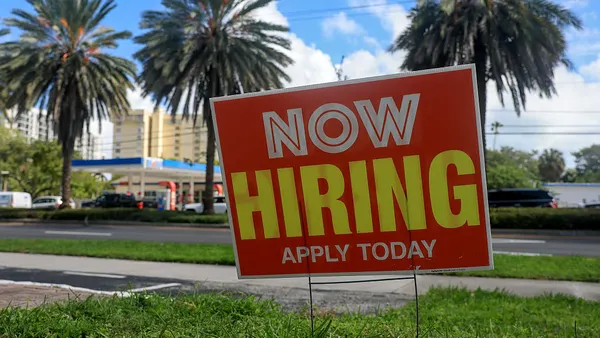The role of the CIO is changing, but that's old news.
Management of shadow IT, the rise of the chief digital officer and changing technologies have shaken the foundation of many CIO offices, according to a Harvey Nash and KPMG survey of almost 4,000 IT leaders.
As technology serves a more critical function in business than ever, the CIO's presence on the board, confidence in strategy and fulfillment have declined year-over-year. But change doesn't have to be a bad thing, and some experts believe these changes herald a new age of CIOs — the "transformational CIO."
Technology strategy and business strategy are the same thing
As CIOs and IT leaders have focused on disrupting the business, many have failed to disrupt themselves, according to Justin Hoss, principal at KPMG, in an interview with CIO Dive. Businesses are swimming in information, but what they don't need is someone to focus on information: They need a leader for innovation and insight.
Part of this disruption is the tradeoff of control for influence, according to the survey. CIOs have to give up some direct responsibilities and trust the cloud and technology partners, Hoss said. The five-year product marches are gone, and now a CIO has to drive microservices, build and fail fast, change cultural norms and embrace automation.
A shift in what CIOs control and influence is therefore bound to occur. The CIO survey found "successful [CIOs] are swapping control for influence and finding new ways to navigate through an uncertain environment." Part of this exchange lies in bringing "shadow IT" out of the shadows and creating an environment that enables distributed IT while maintaining governance.
If you ask 10 people to define what a CDO is, you'll get at least 11 different answers.

Harry Moseley
CIO, Zoom
The phrase "shadow IT" often carries a negative connotation for technologists, conjuring fears of unauthorized devices, applications and systems that make a network vulnerable. But CIOs need to flip the idea of shadow IT being bad on its head and make it an enterprisewide activity, Hoss said.
For many leaders, this means waiting on the edge of a cliff, and big changes to the role and responsibilities could happen overnight. But CIOs embracing this change and disrupting themselves — so somebody else doesn't do it first — is critical, he said. In the long-term, this will result in a better seat at the management table and better alignment between business and IT.
Businesses can no longer bifurcate business and technology strategy: They are the same thing, according to Hoss. Technology isn't an enabler, it is business strategy, and CIOs that fail to get with the times will likely be left behind.
The rise of the CDO
One of the first complications with the position of chief digital officer begins with semantics: What is digital?
If you ask 10 people to define what a CDO is, you'll get at least 11 different answers, said Harry Moseley, CIO of Zoom, in an interview with CIO Dive. What it means for every company, and how every company applies it, is different.
An estimated 15% of large businesses have a CDO. The digital officers have been rising in the C-suite since 2012, and while some CIOs hire CDOs to help drive changes, when thrown in unexpectedly some CIOs treat the new officers with suspicion, feeling "threatened" or "diminished," according to a Gartner report.
But the "money is between the boxes," and a good working relationship between leaders is far more important than who reports to who, Moseley said.
After all, businesses have a tendency to come up with new names and titles even when responsibilities are the same as an old position. And when a job is about delivering great technology within the parameters set by the tech strategy, it often doesn't matter which executive a CIO is reporting too.
Gartner expects strategy-oriented CDOs to decline by late 2019 and taper off by 2025 as digitalization becomes ingrained in the business. After all, "'digital is not an asset type, so there is nothing to persistently control," according to the report.
The five-year product marches are gone, and now a CIO has to drive microservices, build and fail fast, change cultural norms and embrace automation.

Justin Hoss
Principal, KPMG
But the title of CIO may disappear too, according to Hoss. Businesses are still playing with what the right role, functions and responsibilities of a CIO are, and the CIO and CDO may morph from dual roles into a new technology executive.
For many CIOs today, CIOO — chief information and operations officer — would be a more accurate title, according to Moseley. More of the job is devoted to operations, technology and execution than ever before, making the CIO more powerful in the business.
Regardless of the changing role of CIOs, the importance and criticality of the position is only moving up, Moseley said. Technology capabilities have accelerated at an incredible pace, and operational and transformational CIOs need to harness that power and leverage it for the benefit of the business.




















